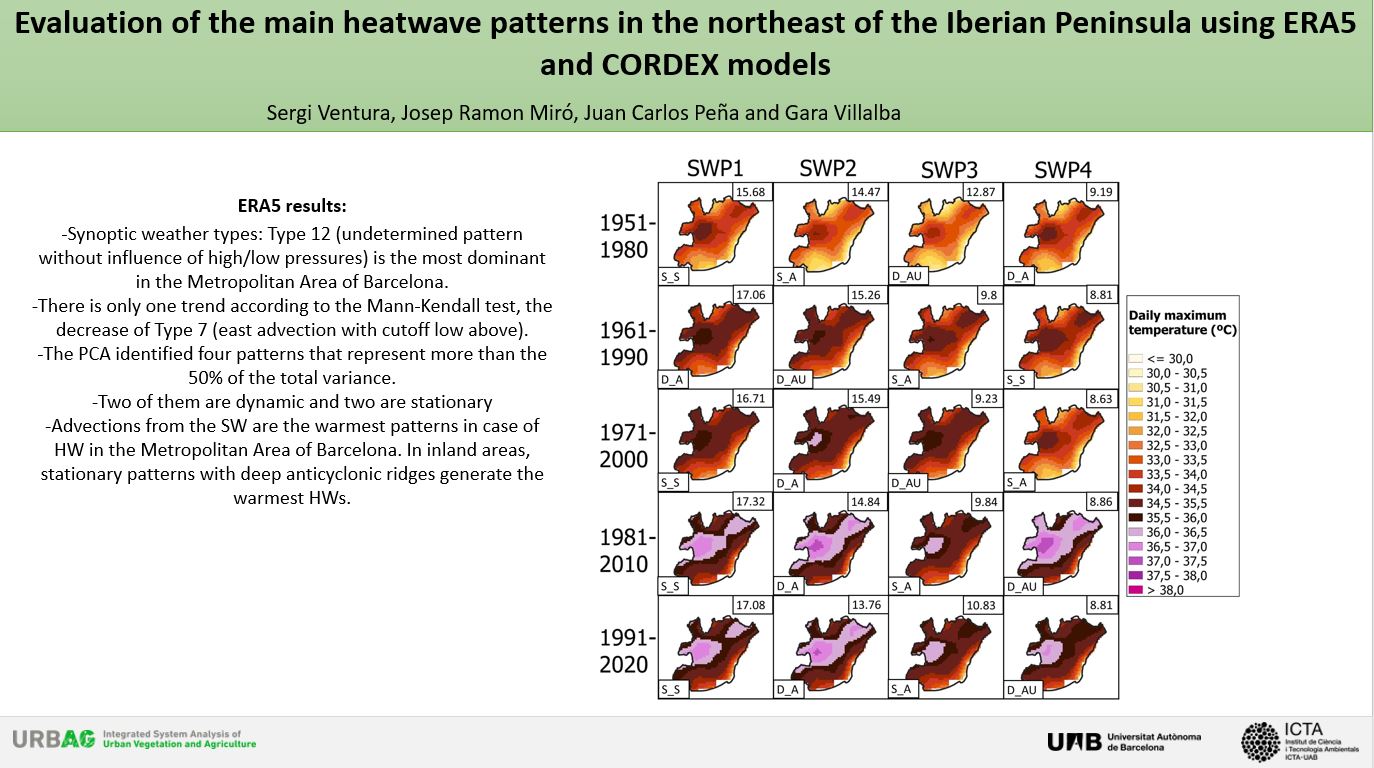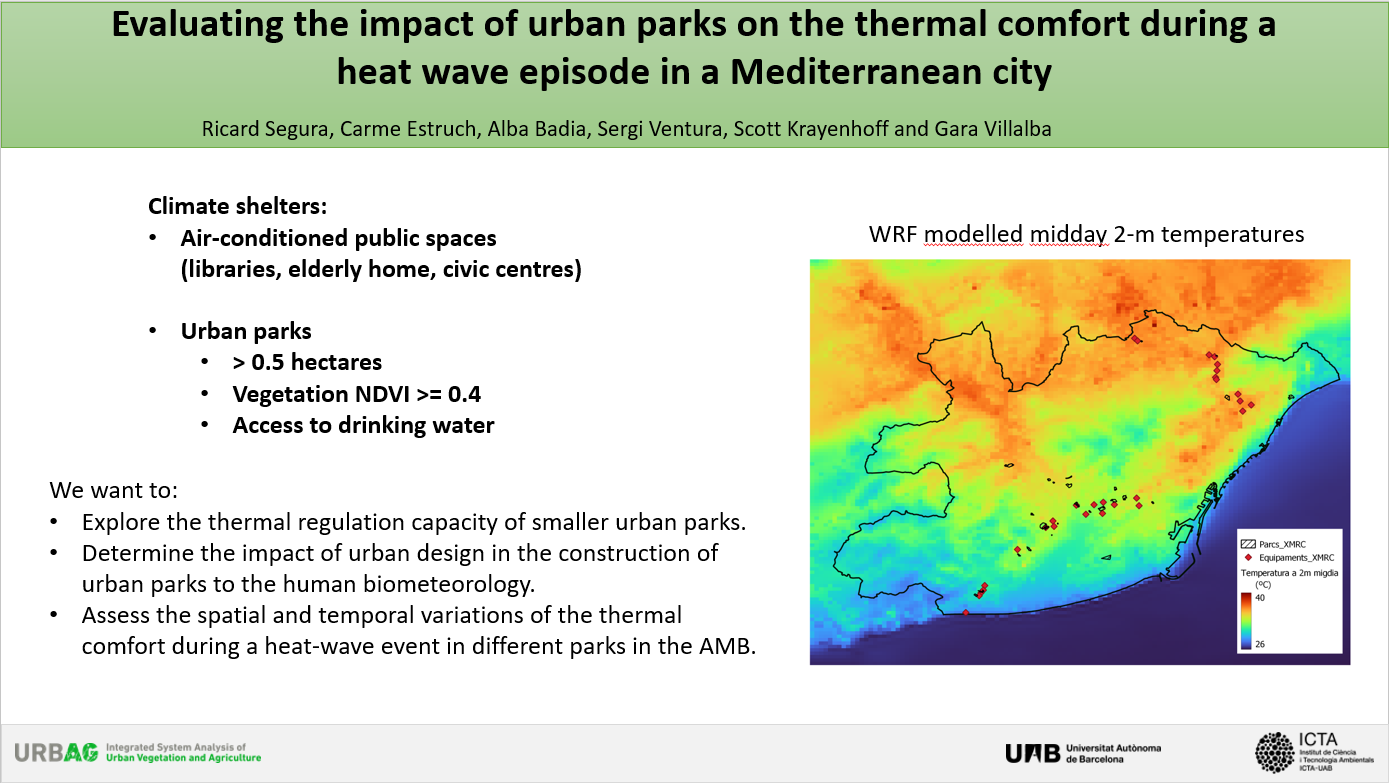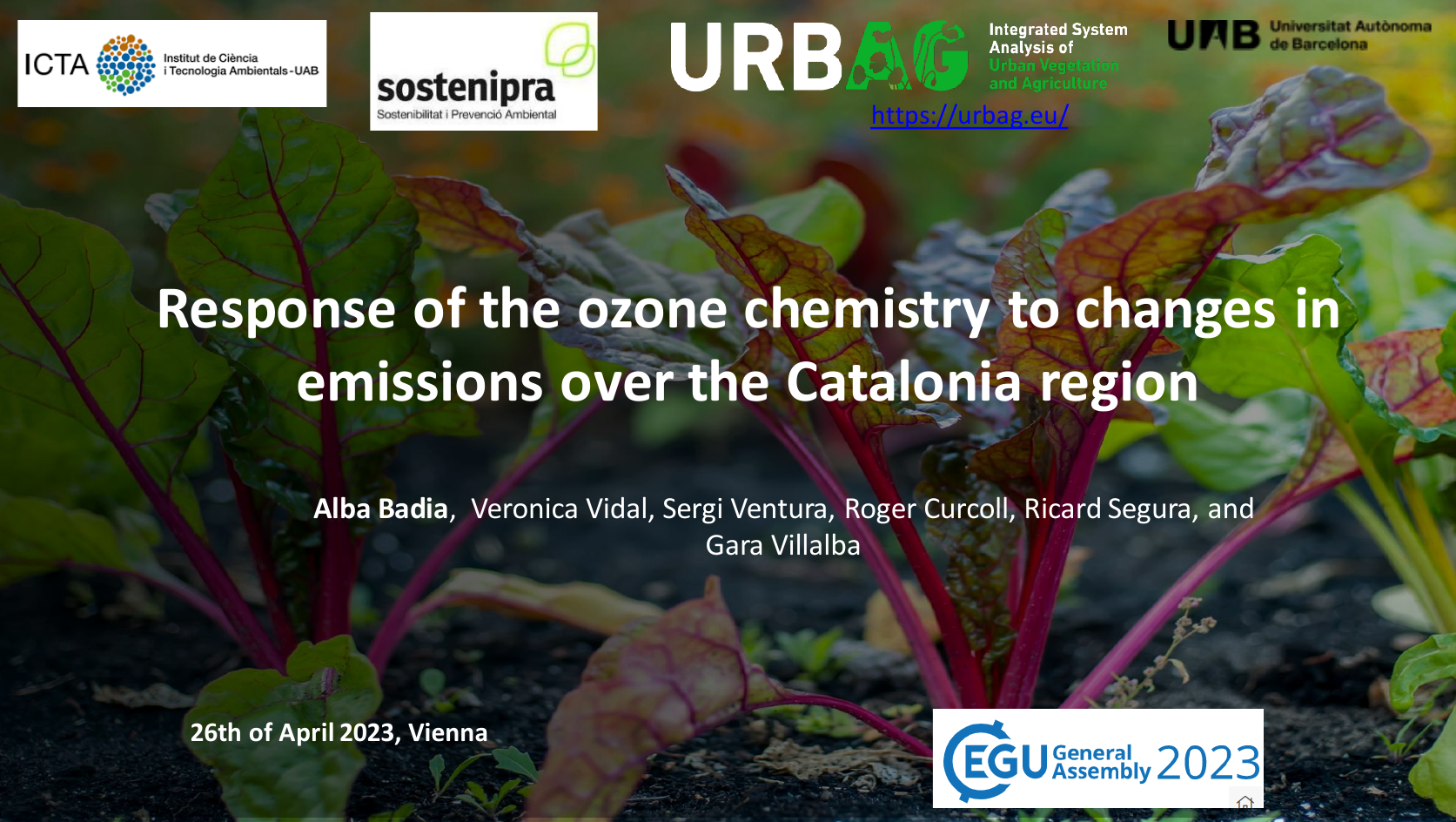URBAG participation at EGU23
18 December 2023
For the third year in a row, URBAG researchers participated in the EGU’s annual General Assembly EGU23, held in Vienna, Austria. Thanks to the hybrid format, over 18,831 registered participants from 105 countries have shared their work during the week-long conference from April 23-28, 2023. Three URBAG presentations were shared at the conference by Alba Badia, Ricard Segura, and Sergi Ventura.
The following two URBAG presentations followed the platform for Early Career Scientists (ECS). The first one was presented by Sergi Ventura in the session “Extreme Climate Events: Variability, Mechanisms and Prediction”. The second, presented by Ricard Segura, was held in the session “Urban Climate, Urban Biometeorology and Scientific Tools for Cities”. The third presentation was made by Alba Badia in the session “Air Pollution Modeling”.
Presentation 1 by Sergi Ventura et al.
Heatwaves are expected to increase not only in intensity but also in frequency and duration in the next decades. Most of the studies are focused on the temperature variable, but little is known about their synoptic structure, which is especially important in mid-latitude regions.
In this study, we propose a Principal Sequence Pattern Analysis (PSPA) to classify the main synoptic patterns that define heatwaves in the northeast of the Iberian Peninsula. This is done by finding the most correlated input variables that represent the highest number of variance possible. The database used for this analysis comes from ERA5 reanalysis data covering the 1951-2020 period, in which we have selected three variables: mean sea level pressure (MSLP), geopotential height at 500 hPa (Z500) and maximum daily temperature at 2 meters (TMAX). Once the historical analysis is prepared, the same steps are repeated for CORDEX models (1951-2000) to discuss the performance of these models simulating heatwave periods.

If you are interested in reading the abstract, please follow this link
Presentation 2 by Ricard Segura et al.
The Mediterranean basin is expected to experience an increase in intensity and frequency of heat wave events. Additionally, heat peaks are exacerbated by the low albedo of urban materials and the heat island effect of urban areas. To reduce heat-related discomfort and health risks, urban planners aim to implement green infrastructures to regulate temperatures thanks to their transpiration cooling effect. For example, the Metropolitan Area of Barcelona (AMB) has created a metropolitan network of “climate shelters”, which are public spaces (both indoor and outdoor) where urban dwellers can find better climatic conditions. Urban parks can be considered “climate shelters” if two requirements are met: the NDVI of the vegetation is higher than 0.4 and the extension of the park is bigger than 0.5 ha. However, given the dense urban edification and space limitation, we wanted to explore the thermal regulation capacity of smaller urban parks which are easier to implement. In this study, we present the results of a micrometeorological measurement campaign to assess the temporal and spatial variations of thermal comfort in parks of different sizes in the AMB during a heatwave episode in July 2022. The goals of this study are to determine the impact on human biometeorology of urban design in the construction of urban parks for facing heatwave episodes and to check the classification requirements for the “climate shelters”.

If you are interested in reading the abstract, please follow this link.
Presentation 3 by Alba Badia et al.
Tropospheric ozone (O3) is an important surface pollutant in urban areas with complex formation mechanisms that depend on the atmospheric chemistry composition and meteorological factors. The severe reduction in anthropogenic emissions during the COVID-19 pandemic can serve to further our understanding of the photochemical mechanisms that lead to O3 formation to provide guidance for policy aiming to reduce air pollution. In this study we use the air quality model WRF-Chem coupled with the urban canopy model BEP-BEM to investigate changes in the ozone chemistry over the Metropolitan Area of Barcelona (AMB) and its atmospheric plume northward, which is responsible for the highest number of hourly O3 exceedances in Spain. The aim is to investigate the response of the ozone chemistry to changes in precursor emissions.

If you are interested in reading the abstract, please follow this link.